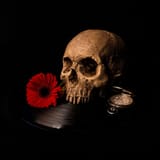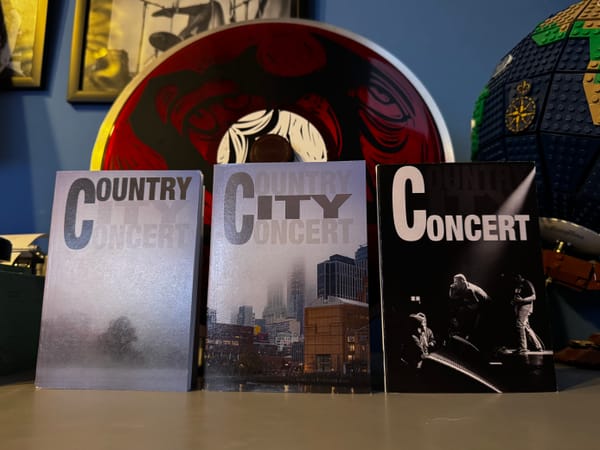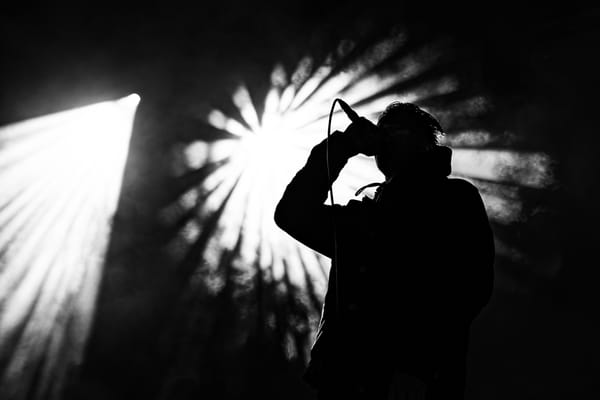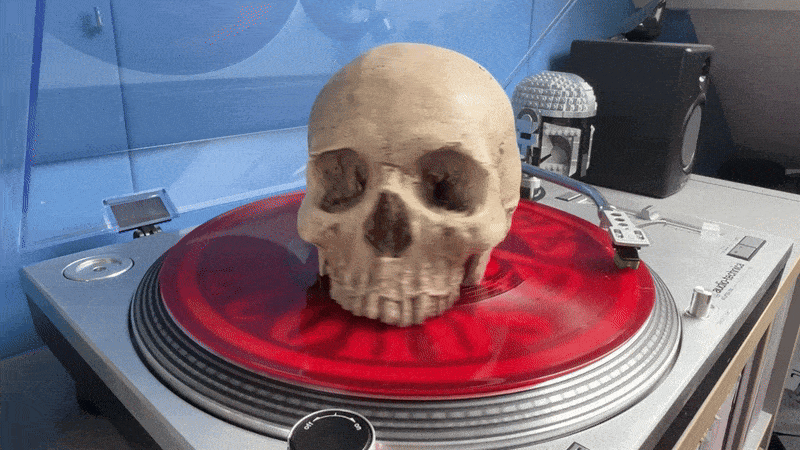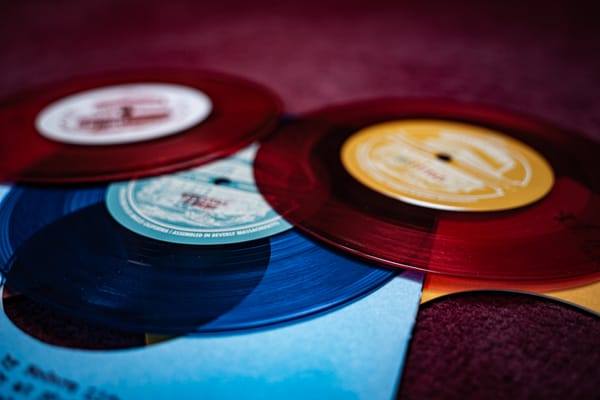On Photographing Punk Musicians – Part 1
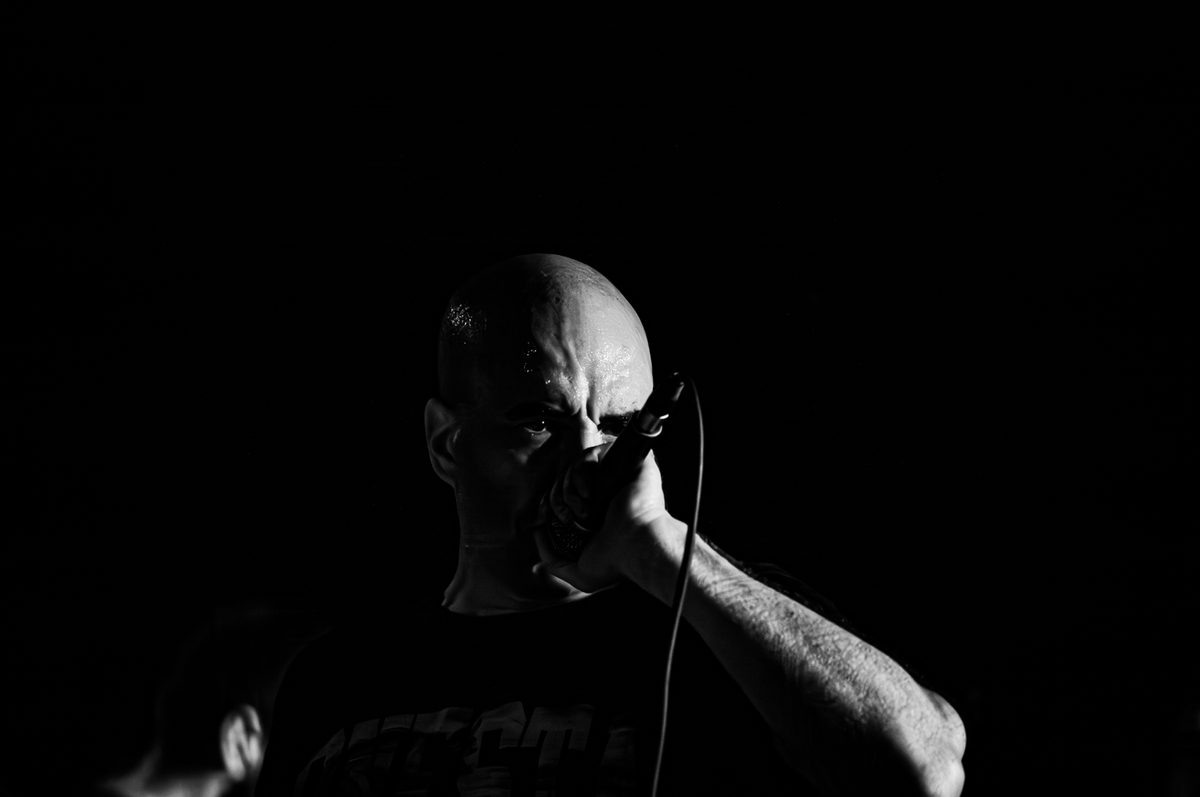
Recently, I published my latest zine, How To Photograph Punk Musicians In 5 Easy Steps. Over the next few weeks, starting with this newsletter, I’ll be sending out issues containing chapters of that zine. If you like it, please consider buying a physical copy at store.terror.management.
I also have copies left of my earlier zine, Terror Management, containing edited versions of essays previously published through this newsletter. Foreword by Greg Bennick (Trial, Between Earth and Sky, Bystander). Thank you.
Intro
So you want to make visual art out of a bunch of sweaty people making loud music in front of an audience?
Strange, but understandable.
It is admittedly an odd vocation, but I suppose there are worse avenues to consider when one is interested in creative flagellation.
This small booklet is here to help.
Somewhat.
Please note that this publication does not trade in advice on how to use a camera in any useful capacity. You will learn less than nothing about composition, exposure, ISO values or anything like that. There are a million and one free resources out in the world and on the internet. This author has nothing to add to any of that.
The only practical advice that I can give in regards to equipment is this: if you don’t own one already, get a half-decent camera that does well in low light. Don’t use a flash. Practice. That’s all there is to that side of the equation.
So no 'how’s' then, or at least not in the technical space. Perhaps you’ll find some useful advice in these pages on ancillary topics. But more than that, you might uncover a why.
One can hope, at least.
Just know one thing: photography is easy until it isn’t anymore.






Clockwise starting top right: Trial, 2011 / Dirty East Godverdomme (now Hamerhaai), 2010 / Mörser, 2016 / Anchor, 2011 / Converge, 2017 / Oathbreaker, 2011
Chapter 1: Just Start
The foreword of this zine is perhaps writing some checks I might not be able to cash. Specifically, the bit about finding out why one would want to become a photographer involved in an underground music movement.
Before reading the rest below, do yourself a favor: if you are even slightly interested in shooting punk shows and you’ve never done it before, just go ahead and do it. Just get your camera, learn the technical basics of photography somewhere online or from a book and have at it. Fuck anyone who looks at you weird, fuck the other photographers who might think your camera is not good enough. Fuck everything and everyone and just throw yourself into it. You don’t really need a reason why.
If your camera was made in the last decade, it’ll be good enough to work with. In fact, an older device will probably force you into learning a lot more about the technical basics than starting out with a high-end camera would, as you’re learning how to work around its limitations.
Go. Be free.
For those more philosophically inclined, read on.
The reason to shoot shows is certainly not money – it is easier for a camel to crawl through the eye of a needle than for a punk show photographer to make a living off of this endeavor. If you want to be paid for photography, shoot weddings. To borrow a phrasing from a Marx brother: I wouldn’t shoot any band that would want to pay me for it, anyway.
Artistically speaking, it can at times feel like a challenging proposition: taking photos of other people being creative in public. It raises questions that have thorns: is this art? Or reporting? Does it matter what it is?
The easy answer to that last question is: 'no, it does not'. Ask any punk photographer if they considered why they wanted to do this before they started doing it and there’s a strong chance that none of them of would answer in the affirmative. It’s just something one feels attracted to and that feeling should be encouraged (see second paragraph).
Now that I’ve given you a copout answer, I will answer the question honestly.
Photography in general is a strange art form, deeply tied to the reality in front of the lens and by that nature – on the face of it – severely limited in terms of making the inner life come alive. Of course we can manipulate images, either in real life or digitally, but at its core there is always something real underneath the facade. Or at least what passes for real in a superficial context.
I say this because, at the end of the day, no photo is actually representative of reality in any given moment. Sure, it has captured elements of the real world in a very specific slice of time (aka the shutter speed used to produce that particular image), but through the myriad creative choices the photographer has had to make – composition, timing, choice of aperture and so on – it becomes a nexus of the photographer’s intent and opportunity rather than a window into a particular moment in time.
Derivative as music photography is, it can invoke the experience of seeing live music with all its intense emotions in tow, or challenge it if seen through the right lens – if you’ll pardon the pun.
Which brings me back to answering the question "is this art?" Because despite my earlier copout: yes, yes it is. Not good art by definition, mind you, but it has the potential to be moving and even transformative.
And because it is art, is has to be made. Art is life. Art is the way we make sense of the world, both inside and outside of the confining borders of societal norms. Art defies quantification and measurement and speaks to each audience member differently, yet at the same time unites us.
So, dear reader, the first step in this process is to simply begin. Go out and go do it. Make art.
